30+ Weirdly Interesting Pictures That Capture a Moment in History
“The past is a foreign country; they do things differently there.” wrote L.P. Hartley in his 1953 novel The Go-Between. And he wasn’t wrong! We’ve compiled some unique photos and images featuring the craziest elements from history, from Ancient Egyptian police monkeys to famous novelists taking part in pantless duels, and from Roman Emperors to The Muppets. So, join us as we celebrate our weird and wonderful past.

Another Fine Mess You’ve Gotten Me Into, Wilbur
Not counting Icarus and Daedalus, French inventor Jacques-Étienne Montgolfier was the first human to fly in a hot-air balloon in 1783. But Orville and Wilbur Wright were the first to fly in an airplane. On December 17th, 1903, at Kitty Hawk, North Carolina, the Wright brothers flew the first powered aircraft four times, with their longest flight lasting 59 seconds and covering 852 feet.
 Another Fine Mess You’ve Gotten Me Into, Wilbur
Another Fine Mess You’ve Gotten Me Into, Wilbur
But did you know that almost immediately after their first flight, their plane, the imaginatively named Flyer 1, was destroyed by a strong gust of wind? It’s unknown which of the Wright brothers caused the gust by having beans for breakfast.
You’re Under Arrest for Monkeying Around!
Did you know that ancient Egyptians used baboons to catch criminals? Yep, it’s true. Thousands of years ago, not only did criminals get in trouble with their mummies, but monkeys were used like we use police dogs today. How do we know? Well, artworks and hieroglyphs depict Egyptian officers using baboons on leashes to apprehend criminals.
 You’re Under Arrest for Monkeying Around!
You’re Under Arrest for Monkeying Around!
This classical artwork from the Saqqara necropolis shows an ancient Egyptian officer unleashing a baboon on a thief in a marketplace and the criminal begging them to call the animal off before it bites his leg off!
Google Maps on a 1920s Apple Watch
Today, we all wear Apple Watches and use Google Maps to navigate. But the idea of a map on your watch is nothing new. This map watch comes from the 1920s and features tiny maps that you can scroll up and down using the two dials on the side.
 Google Maps on a 1920s Apple Watch
Google Maps on a 1920s Apple Watch
Instead of downloading apps, you’d load up tiny maps showing the road you were traveling on and nothing else. We guess they worked, as you only needed to know which roads to turn or not turn onto.
The Great Smog of London
On December 5th, 1952, a gothic smog descended on London. The Great Smog was known as “pea-soupers” as it was like looking through pea soup. It was caused by cold weather and airborne pollutants from burning coal. Things got so bad that blind people had to help citizens find their way home in the dark.
 The Great Smog of London
The Great Smog of London
Four thousand people lost their lives in the Great Smog, and 100,000 more were made ill by the smog’s effects. Then, on December 9th, a change in the weather dispersed the smog.
Portrait of a Family
When would you guess this portrait of a family came from? Maybe a couple of hundred years ago or during Queen Victoria’s reign? Well, if you look closely, there are two clues. First are the Roman letters, and second are the togas. You’ll be staggered to learn that this gold glass medallion and its family come from Alexandria, which was then part of Roman Egypt.
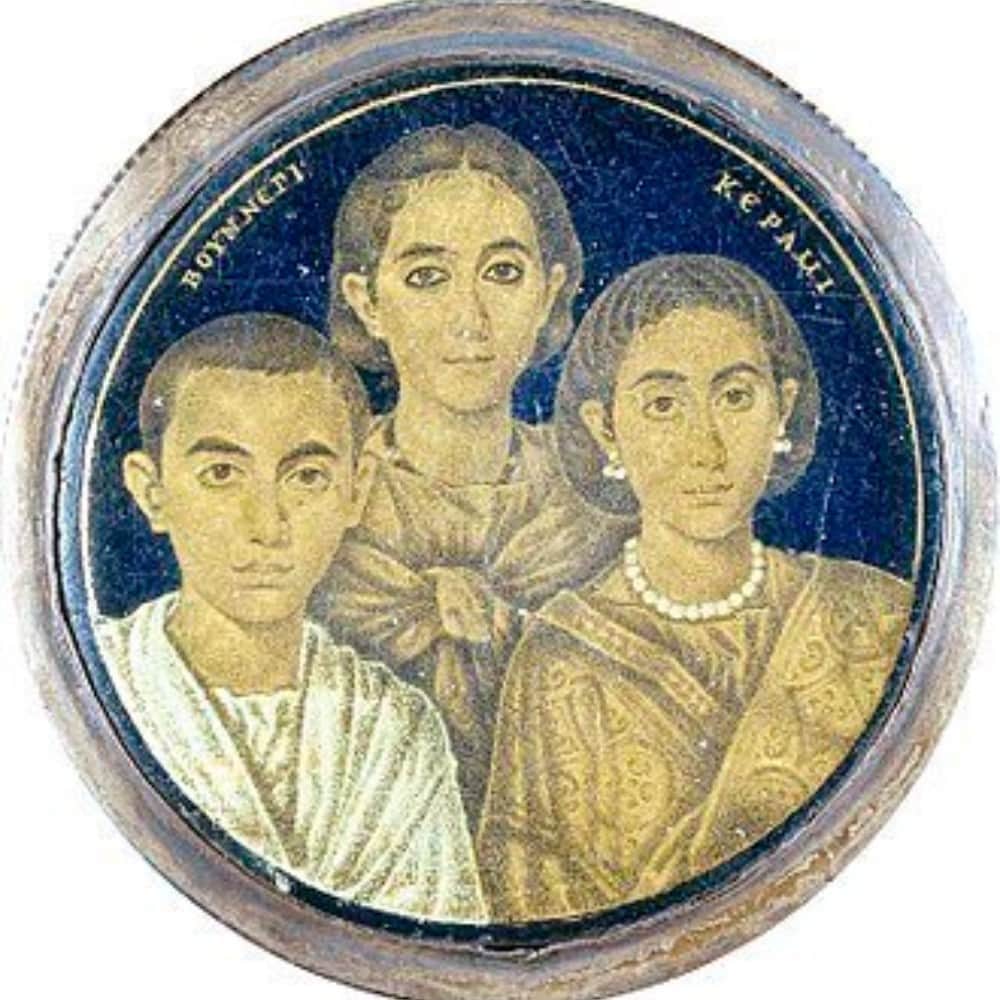 Portrait of a Family
Portrait of a Family
This curio dates to between 250-230 A.D. and is now housed at the Museo di Santa Giulia, Brescia, Italy. Portrait painting took longer back then, so this poor family had to pose like that for four months!
The Venus of Brassempouy
How old do you think this ivory figure of a woman’s face is? Roman? Greek? Le Dame de Brassempouy, or Lady with the Hood, is an ivory figurine from the Upper Palaeolithic era circa 25,000 years ago and is believed to be history’s oldest representation of a human face.
 The Venus of Brassempouy
The Venus of Brassempouy
Carved from mammoth ivory, she was discovered in a cave at Brassempouy, southwest France, in 1894. It’s believed she had a body, but sadly, the rest of her was lost in the mists of time.
The Minnesota Blizzard of 1881
The winter of 1880-81 in North America has gone down in history as one of the worst in modern times. “The Hard Winter” began on October 15th, 1880, and it didn’t stop snowing until April 1881. Railroads in Wisconsin and the Dakotas were covered with so much snow that trains couldn’t pass, and dozens of towns starved as no supplies could get through.
 The Minnesota Blizzard of 1881
The Minnesota Blizzard of 1881
However, this brave engine driver was determined to get through and deliver supplies. Sadly, when the show thawed, many towns were destroyed by flooding.
Three Little Kitties
Now, you may think dressing up cats for photographs was a recent invention. We spend approximately one-third of our lives asleep, one-third working, and one-third looking at cute cat videos on YouTube. But surprisingly, cats and dogs playing dress-up wasn’t invented by millennials who carry tiny dogs in their handbags.
 Three Little Kitties
Three Little Kitties
These three beauties were dressed in little dresses and bonnets in 1914! Dressing your pets up in those days was quite a regular occurrence. We should know because we just spent eight hours looking at cats dressed as dandy Victorian gentlemen on YouTube!
Predicting Television
This German postcard from the late 19th or early 20th century depicts what they thought theater would be like in the year 2000. And they got it completely right! The theater production is beamed into people’s homes and projected onto the walls, predicting television decades before Scotsman John Logie Baird invented it.
 Predicting Television
Predicting Television
If, however, you wanted to hear the actor’s voices or accompanying orchestra, you’d have to be on your phone… just like kids today in every movie theater!
The First Recorded Lawsuit
In 2022, millions watched Johnny Depp and Amber Heard’s defamation suit. But these kinds of lawsuits have been going on for thousands of years. How do we know? This is the earliest known record of a lawsuit, written in the Akkadian cuneiform text on a 4,000-year-old Assyrian clay tablet. It records court testimony describing a dispute between two merchants.
 The First Recorded Lawsuit
The First Recorded Lawsuit
Similarly, a 1,750 customer complaint clay tablet, which details a dispute about an ancient Mesopotamian merchant named Ea-nāṣir from a customer named Nanni — was discovered in Iran.
Why Do We Call Them Cappuccinos?
Do you know why your favorite cup of coffee is named a cappuccino? Well, it turns out that it’s named after the brown robes of the Capuchin monks. Espresso coffee is so dark brown that it’s almost black, but when mixed with frothy milk, someone remarked it was the same color as their brown robes.
 Why Do We Call Them Cappuccinos?
Why Do We Call Them Cappuccinos?
The robes feature a long, distinctive pointed hood that hangs down the back. The Italian word for this hood is cappuccio, which gave the 16th Century Franciscan friars their name, and in turn, the cappuccino.
Lockheed SR-71 Blackbird
This beast isn’t Professor X from the X-Men’s plane; it’s history’s greatest-ever plane, the Lockheed SR-71 Blackbird. The plane was a long-range, high-altitude reconnaissance aircraft from the 1960s. They flew at altitudes of 85,000 feet, which means the pilots saw the blackness of space above them.
 Lockheed SR-71 Blackbird
Lockheed SR-71 Blackbird
In tests, Blackbird flew at a speed of Mach 3.4 — that’s 4,198 kilometers or 2,608 miles per hour. Enemies tried to take them down, but because they were so fast — and thanks to their early stealth capabilities — they always outraced them.
Walk From India to Sri Lanka
Amazingly, you could walk from India to Sri Lanka until around 500 years ago. The two landmasses were linked by a land bridge called Rama Setu or Adam’s Bridge until about 1480 AD. According to Hindu mythology, Lord Rama constructed the bridge so he and his fighters could reach the island of Lanka to rescue his wife, Sita.
 Walk From India to Sri Lanka
Walk From India to Sri Lanka
It’s believed erosion, sea-level changes, and a mighty cyclone formed the Palk Strait late in the 15th century. Hence, Rama’s land bridge disappeared, and they became separate entities.
Early Electronic Computer
Is that an Electronic Computer in your pocket, or are you just pleased to see us? These two photos were taken in the same spot in London 58 years apart. The black and white image speaks for itself — a massive computer is unloaded off a flatbed truck, while the color photo shows how far technology has come in six decades.
 Early Electronic Computer
Early Electronic Computer
The 1960s computer probably had a memory the size of a Stegosaurus’ brain and came with a crank you had to turn whenever it ran out of power.
The World’s Oldest Computer
This is the Antikythera Mechanism. It’s an ancient Greek hand-powered orrery, and it’s generally referred to as the world’s oldest analog computer. It was found in a shipwreck off the coast of the Greek island of Antikythera in 1901. For around a hundred years, no one knew what this strange device featuring moving gears and cogs was used for.
 The World’s Oldest Computer
The World’s Oldest Computer
It’s thought to date back to 178 BC, and its purpose was to predict astronomical positions and eclipses and the Olympic Games decades in advance.
Persona Non-Grata
This ancient Greek piece of pottery is called an Ostracon. When members of Athenian society were caught being naughty, citizens would vote to banish them by writing their choice on an Ostracon. The loser was then exiled for ten years from the city, thus giving rise to the terms ostracism and ostracized.
 Persona Non-Grata
Persona Non-Grata
Ancient Greeks also used pottery as crockery and to wipe their butts! Some scholars suggest that ostracons may have been re-used for this purpose, to further curse the exiled individual by soiling their name!
Stagecoach Mary
Mary Fields was born in Tennessee around 1832 but became the first female African American mail carrier in the United States. Aged 60, she became known as Stagecoach Mary, as she drove her stagecoach between Cascade, Montana, to Saint Peter’s Mission, also in Montana, between 1895 and 1903.
 Stagecoach Mary
Stagecoach Mary
In addition to the dangerous terrain and weather, Mary would carry several tools of protection under her apron to fend off attacks from wolves and bandits who often used to hold up stagecoaches.
The Mayflower Got Lost
In 1620, the Pilgrims landed on Plymouth Rock in The Mayflower. But did you know that they only landed in Massachusetts because they ran out of drinks and got lost? You see, they were headed for northern Virginia but got dragged off course in rough seas.
 The Mayflower Got Lost
The Mayflower Got Lost
Back then, ale was drunk on long sea voyages as it was better at preventing scurvy than plain old water. Running low on their preferred beverage, they headed for land, and the rest, as they say, is history.
The Oldest Known Handbag
No, this is Louis Vuitton’s latest release; it’s the world’s oldest known handbag. Known as the Courtauld Bag, it was created for a noble lady of the Persian-Mongol court in Mosul, Northern Iraq. It was the equivalent of The Birkin Bag between approximately 1300 and 1330 — that’s 700 years ago.
 The Oldest Known Handbag
The Oldest Known Handbag
The handbag is one of the finest pieces of inlaid metalwork in existence and is the only surviving object of its kind. It’s now housed in London’s Courtauld Art Gallery.
This Medieval Backpack Rocks!
For centuries, kids have had cool backpacks to put their school books in. This leather book box comes from the Lombardy region of Italy and is believed to date from 1465 – 1485 A.D. Though it seems its owner was a fan of Medieval heavy metal music, the dude on the box might be Pope Sixtus IV.
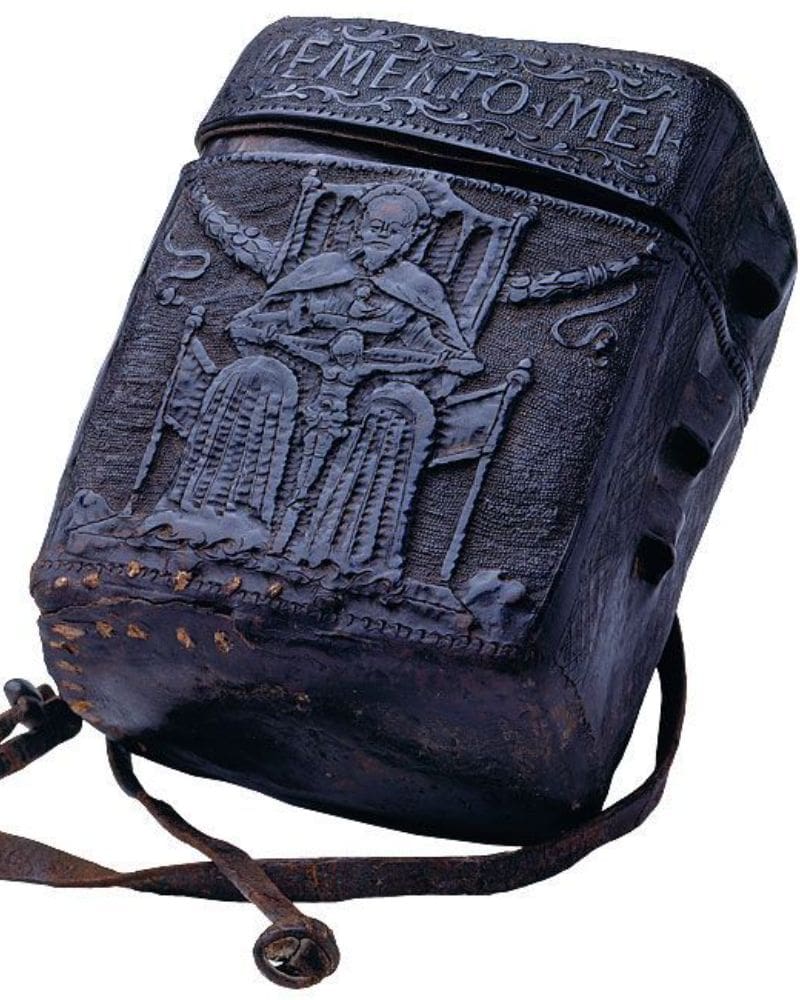 This Medieval Backpack Rocks!
This Medieval Backpack Rocks!
The Latin words at the top, ‘Memento Mei’ mean ‘Remember Me.’ Don’t worry; no one’s gonna forget the kid with the coolest backpack in the monastery. They might have laughed at his haircut, though!
Medieval Book Repairs
In medieval times, before the Gutenberg Printing Press, there was only one way to print books — writing them long-form by hand. Most often handwritten by monks, these books were printed in Latin on parchment or vellum. But just like today’s paper, these materials sometimes ripped or rotted.
 Medieval Book Repairs
Medieval Book Repairs
So, it wasn’t unusual to repair damaged vellum pages by sewing them together with a little piece of colorful embroidery. How cute is that? We don’t read Latin, but this text probably accuses someone of being a witch.
Seeing TV for the First Time
They say a picture paints a thousand words, and the look on this little lad’s face says it all. He saw television for the very first time in 1948. While he and millions like him would have seen movies and newsreels before (yes, people used to get their news in the movie theater and ‘wireless’ radios,) this was the first time moving pictures with voices made it into our homes.
 Seeing TV for the First Time
Seeing TV for the First Time
Within just a few years, most American homes ate dinner in front of the TV. Pretty soon, they were watching Star Trek and The Muppet Show.
Beam Me Up, Scotty
This model is the first USS Enterprise (NCC-1701) in Star Trek and was designed by the series creator, Gene Roddenberry, and the show’s art director, Matt Jefferies, a designer at Desilu Studios who had been a pilot in WWII and was influenced by the aircraft carrier USS Enterprise. Roddenberry wanted a ship with “no rockets, no jets, no fire streams.”
 Beam Me Up, Scotty
Beam Me Up, Scotty
The 11-foot model became one of the most famous cultural icons of the 1960s and continued to boldly go where no ship had gone before for the next seven decades.
Muppets and Muppeteers
This wonderful photo from 1981 shows the cast of The Muppet Show together with their puppeteers, or should that be Muppeteers? The front row features The Great Gonzo, Dr. Teeth and the Electric Mayhem’s bass player Floyd Pepper, Muppet Show host Kermit the Frog, stand-up comedian Fozzie Bear, and road manager Scooter.
 Muppets and Muppeteers
Muppets and Muppeteers
Miss Piggy, Dr. Bunsen Honeydew, Animal, Beaker, Rizzo the Rat, and The Swedish Chef watch on from the balcony. The man with his hand up Kermit the Frog’s derrière is genius Muppet creator Jim Henson.
Julius Caesar’s Stray Cat Sanctuary
March 15th is a famous and ominous historical date known as ‘The Ides of March.’ On this day in 44 B.C., a group of 50-60 senators took the life of Julius Caesar in this plaza in Rome. Archaeologists unearthed the Largo di Torre Argentina plaza in the center of Rome in the 1920s.
 Julius Caesar’s Stray Cat Sanctuary
Julius Caesar’s Stray Cat Sanctuary
Fast forward to today, and the site where Caesar passed away is home to hundreds of stray cats, thanks to a brave battalion of gattare or “cat ladies.”
The World’s First Female Fighter Pilot
Though a French woman named Marie Marvingt was the first female combat pilot in 1915, Sabiha Gökçen was the world’s first female fighter pilot.
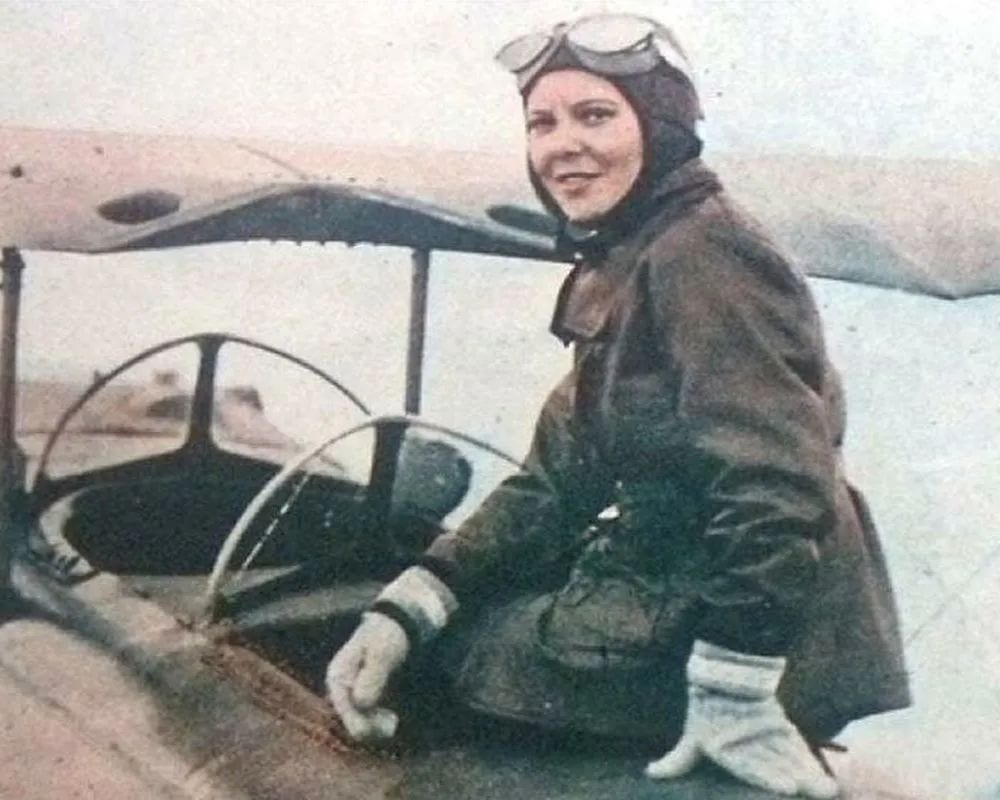 The World’s First Female Fighter Pilot
The World’s First Female Fighter Pilot
She was an orphan and became the first Turkish aviatrix at the age of 23. She flew 8,000 hours in 32 different operations. Istanbul’s international airport, Sabiha Gökçen Airport, is named after her.
The Dane Hater
This is the formerly magnificent Swedish warship known as Mars, Makalös, or Jutehataren, which means “The Dane Hater.” She was built between 1563 and 1564 for King Eric XIV. Spanning 70 meters, Mars was the pride of Sweden’s naval fleet.
 The Dane Hater
The Dane Hater
However, on one of her first missions in 1564, during the Northern Seven Years’ War, the ship caught fire and exploded in the midst of the first battle of Öland. The Baltic Sea’s cold temperatures and low oxygen have preserved her spectacularly well.
Women’s Auxiliary Ferry Squadron
These brave ladies are pilots from the Women’s Auxiliary Ferry Squadron at Long Beach Army Airfield in 1943, while the plane is a Vultee BT-13 Valiant. Second from the left, Cornelia Clark Fort was a bit of a poet and wrote…
 Women’s Auxiliary Ferry Squadron
Women’s Auxiliary Ferry Squadron
“I dearly loved the airports, little and big. I loved the sky and the airplanes, and yet, best of all, I loved the flying. I was happiest in the sky at dawn when the quietness of the air was like a caress when the noon sun beat down, and at dusk when the sky was drenched with the fading light.”
Mount Olympus
This stunning shot is of the majestic Mount Olympus in Greece, jutting above the clouds. In Greek mythology, Olympus was the home of the gods. Twelve gods resided there, including the mighty Zeus, his wife, Hera, plus the god of the sea, Poseidon, the god of partying, Dionysus, and the goddess of the harvest Demeter.
 Mount Olympus
Mount Olympus
Hermes, Aphrodite, Hephaestus, Ares, Artemis, Apollo, and Athena also lived there, eating Ambrosia and controlling their Greek subjects like puppet masters.
Thank You for Flying Economy!
If taking to the skies in a flying tin can wasn’t scary enough already, early aviation contained one massive flaw. Early propellor planes sometimes stalled mid-flight — which was something the manufacturers really should’ve erased at the production stage and were surely grounds for a refund, right?
 Thank You for Flying Economy!
Thank You for Flying Economy!
This design flaw meant the pilot occasionally had to hop out of the cockpit, stand on the wheel and restart the propellor several thousand feet in the air!
Colorful Nigerian Weddings
You know how bridesmaids wear the same color dresses? Well, if you’re ever lucky enough to attend a Nigerian wedding, you’ll have to wear the same color as half the guests. It’s a tradition that dates back centuries called Aso-Ebi.
 Colorful Nigerian Weddings
Colorful Nigerian Weddings
The word ‘aso’ in the local Yoruba language means cloth, while ‘ebi’ means family, so the phrase means “family clothes.” Couples choose what their guests wear by assigning a color for the bride’s family and a separate color for the groom’s family.
Building the London Underground
The world’s first underground railway was built in London in 1863. At first, people were scared to use the metro as they thought you couldn’t breathe underground. This photo from 1898 shows miners building the British Museum Station on the Central Line, which originally ran between Shepherd’s Bush and Bank Station at the Bank of England.
 Building the London Underground
Building the London Underground
The Central Line opened in 1900 and was commonly known as the ‘Twopenny Line’ as that’s how much it cost. Today, it should be called the two-month salary line, as that’s how much a day ticket costs.
Pin Ball Wizards
Before your local ten-pin bowling alley was automated, kids were employed to stack the pins. They’d earn 10-15 cents per line, and if they were really efficient, they could work on two lanes at once. But it was dangerous work as tipsy bowlers would often target the pin boys, sending ten-pound bowling balls hurtling toward them!
 Pin Ball Wizards
Pin Ball Wizards
Automatic Pinspotters ruined these kids’ careers in the 1950s… just like robots will take away all our jobs!
Mississippi Mud Mounds
When most people think about how Native Americans used to live, they envisage nomadic dwellers living in tee-pees. But did you know that buildings have been found on dozens of sites along the banks of the Mississippi River? The mounds are usually rectangular, flat-topped earthen platforms constructed with wooden posts covered with mud plaster and thatched roofs.
 Mississippi Mud Mounds
Mississippi Mud Mounds
These buildings housed tens of thousands of First Nations people and were the biggest North American cities until Philadelphia, Pennsylvania, boomed around 1800.
What’s the Worst That Could Happen, Lads?
No, this isn’t The Beatles’ grandfathers; it’s actually some of the officers of the ill-fated RMS Titanic on deck a year before they perished. First Officer William Murdoch is on the left, while Captain E.J. Smith is on the right.
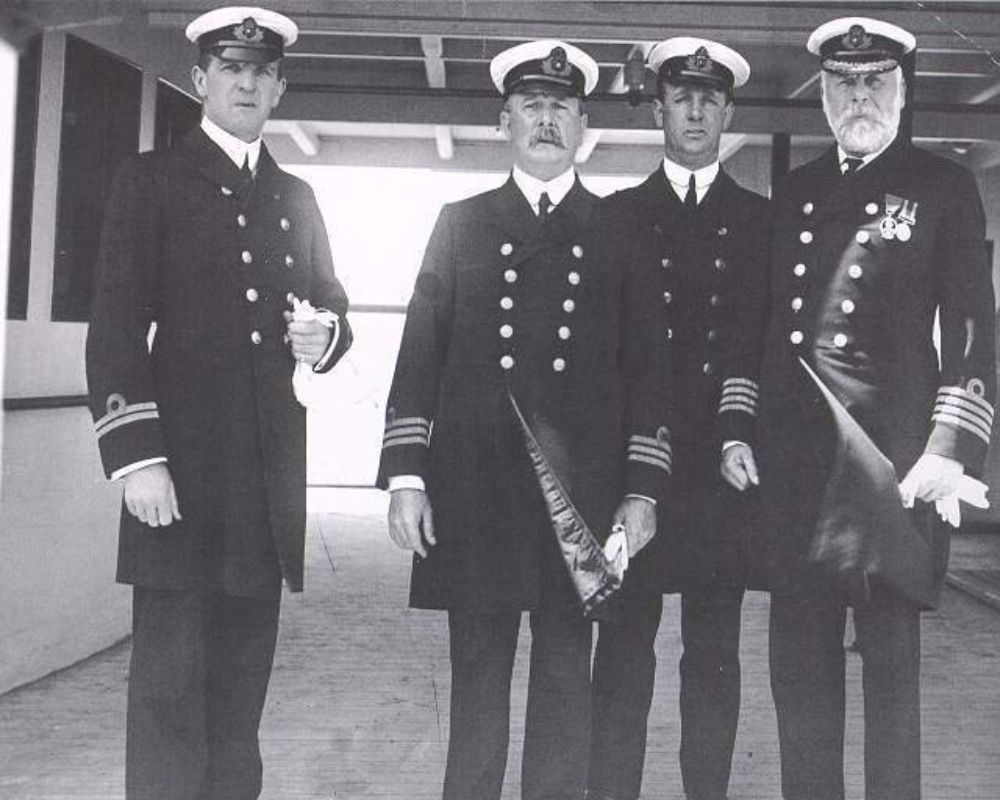 What’s the Worst That Could Happen, Lads?
What’s the Worst That Could Happen, Lads?
The “unsinkable” cruise liner set sail for New York on her maiden voyage on April 10th, 1912. Five days later, she hit an iceberg off Newfoundland and sank, along with more than 1,500 passengers, including Murdoch and Smith.
The Rose City
Petra isn’t just Jordan’s most visited tourist attraction and a shooting location for Indiana Jones and the Last Crusade; its rock-cut architecture and water conduit system once formed an ancient city and home to thousands of people. Originally known to its inhabitants as Raqmu or Raqēmō, Petra is believed to have been established around the 6th century BCE.
 The Rose City
The Rose City
The Rose City was lost over the centuries until 1812, when Swiss explorer Johann Ludwig Burckhardt rediscovered it. It was made a UNESCO World Heritage Site in 1985.
Queen Victoria’s Wedding Cake
In 1840, Queen Victoria married Prince Albert of Saxe-Coburg and Gotha, and their wedding cake covered half of London. The English plum cake comprised three tiers that stood 14 inches tall, measured nearly 10 feet across, and weighed a whopping 300 pounds!
 Queen Victoria’s Wedding Cake
Queen Victoria’s Wedding Cake
But not every wedding guest gobbled down their slice. Some kept their cake, knowing it would fetch a mint in 175 years. In 2016, a slice of Queen Victoria’s wedding cake fetched £1,500 ($2,032) at auction.
One of the First True Color Photos
Believe it or not, this photo from 1910 of French soldiers outside the metro station hasn’t been colorized. The color is intrinsic to the film as it’s an autochrome photo developed and patented in 1903 by the Lumière Brothers.
 One of the First True Color Photos
One of the First True Color Photos
Although fellow Frenchman Louis Le Prince was the first to record moving images, Lyonnaise inventors Auguste and Louis Lumière made the revolutionary Cinématographe camera and projector. Without them, we wouldn’t have had movies. Merci, Louis, Louis et Auguste!
The Earliest-Born Person Ever Photographed
Who’s this lady, and why’s she so important? Well, she’s only the earliest-born person ever captured on film. The grainy black-and-white snap features Delaware inhabitant Hannah Stilley. An early photographer took her picture in 1840, and since she was born around 1746, she was 94 years old when she was snapped.
 The Earliest-Born Person Ever Photographed
The Earliest-Born Person Ever Photographed
She married Joseph Gorby in 1770 and had at least six children. Hannah passed away in 1840, not long after the photo was taken, at the grand old age of 95.
The Monowheel
By the 1930s, the combustion engine was taking off, and much of the Western world had an automobile or a motorcycle. But one invention that never took was Italian Goventosa de Udine’s Monowheel. Designed in 1931, it required the passenger to sit and steer a sterling wheel while the actual wheel they sat in revolved above their heads.
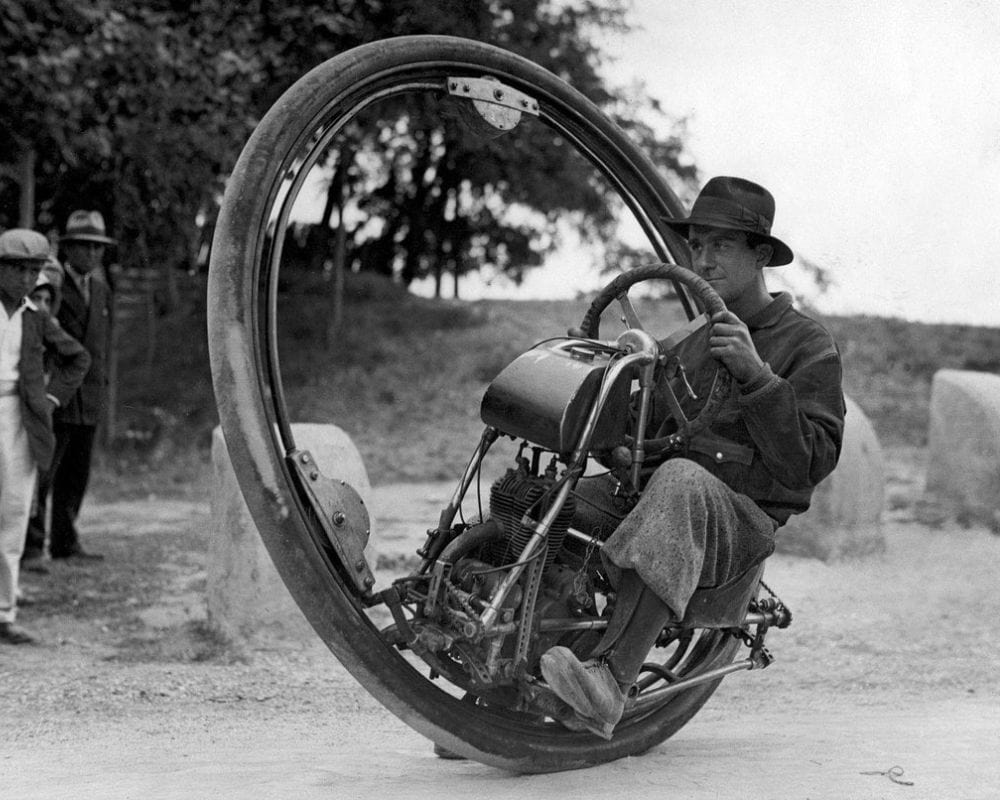 The Monowheel
The Monowheel
We think it would have been as disorienting as driving a gyroscope. Oh, and the Monowheel had a top speed of 150 kilometers per hour, which is 93 mph in English.
Penny Farthing Made for Two
We’ve all heard of a tandem — a bicycle made for two — but what about a Penny Farthing made for two? The name came from the difference in the size of the wheels, which were reminiscent of British penny and farthing coins, with the penny being the larger of the two.
 Penny Farthing Made for Two
Penny Farthing Made for Two
We assume Penny Farthing made for two from 1886, is a Tuppenny Farthing. Notice the man controls the steering wheel and decides where they’re headed. The past might be a foreign country, but “plus ça change, plus c’est la même chose” — the more things change, the more they stay the same.
The Erfurt Latrine Disaster
On the morning of July 26th, 1184, while he was King of Germany but before he was Holy Roman Emperor, Henry VI held a meeting of all his knights and noblemen in the Petersberg Citadel in Erfurt, Germany. However, the combined weight of hundreds of people caused the wooden floor to collapse, and most knights fell into the latrine cesspit below.
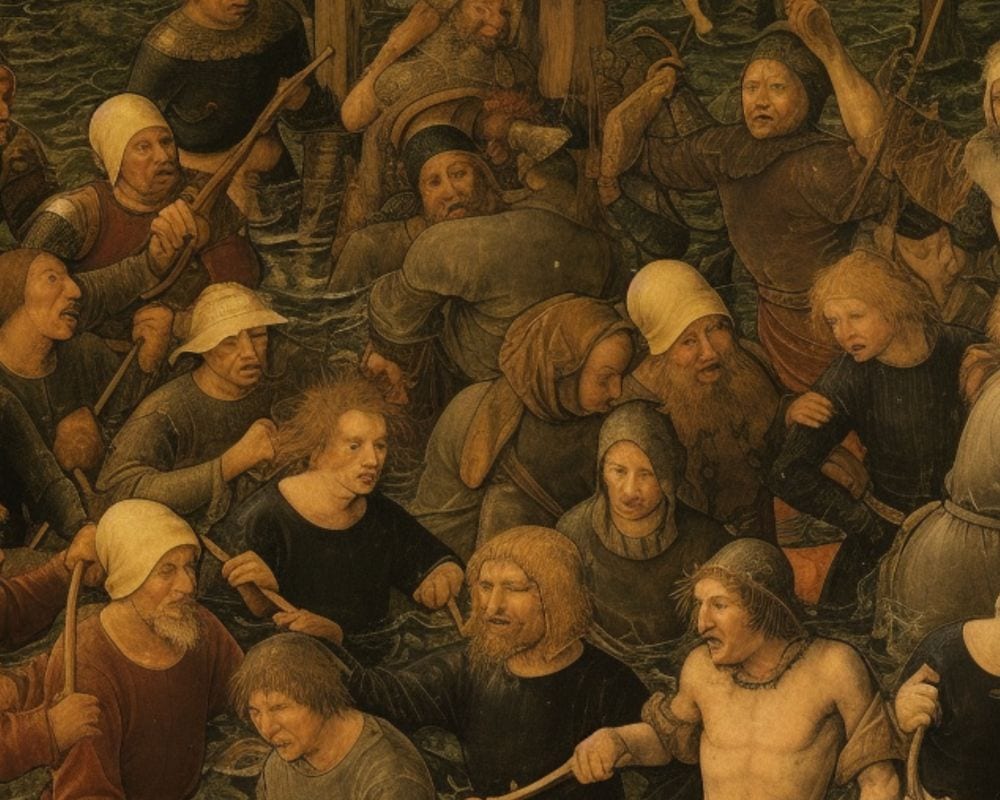 The Erfurt Latrine Disaster
The Erfurt Latrine Disaster
Henry VI survived by clinging to a railing for his life. Some knights were saved by ladders, but 60 of his finest knights drowned in liquid or succumbed to noxious fumes.
The South Sea Bubble
Two hundred years before the dot com bubble burst in the early 2000s, the South Sea Bubble burst in 1720. Stocks and shares in the company — which provided enslaved people to South America — plummeted, leading to a massive financial crisis. So, the British Parliament debated a resolution for bankers to be sewn into sacks with snakes and thrown into the River Thames.
 The South Sea Bubble
The South Sea Bubble
After bankers caused a worldwide recession in 2008, Iceland arrested the culprits, but every other nation let them walk free so they could do it again.
Dumas the Dumb
Alexandre Dumas’ novels, like The Three Musketeers and The Count of Monte Cristo, are famed for their swashbuckling duels. The 19th-century French novelist and playwright led a wild life filled with love affairs, and when he was 23 years old, one of these affairs landed him in a duel.
 Dumas the Dumb
Dumas the Dumb
On January 5th, 1825, he had a swordfight with another man. He sustained no injuries, but his pants fell down mid-fight! So, you could say Dumas was a bit of a dumb-dumb!
A Mammoth Expedition
Explorers Lewis and Clark famously traversed the western United States after 1803’s Louisiana Purchase. They set off from Illinois in 1804 and arrived at the Pacific Ocean in Washington State in 1805. While mapping the interior was their primary goal, their second mission was to find a live woolly mammoth to replace the eagle as the symbol of the United States!
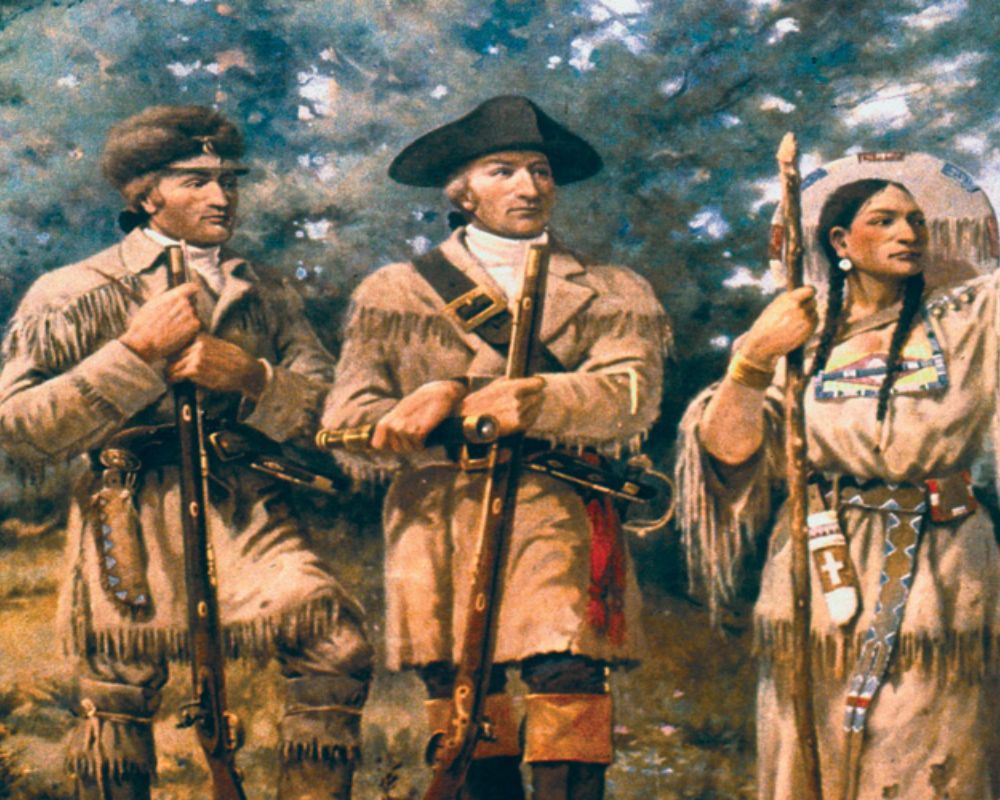 A Mammoth Expedition
A Mammoth Expedition
While this mission was a flight of fancy, mammoths and dozens of megafauna used to live in North America until 10,000 years ago. Some scientists believe the Younger Dryas Impact meteor melted the ice caps, wiping out the megafauna.